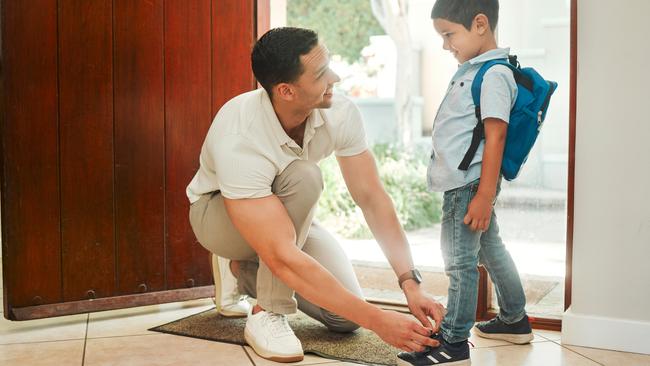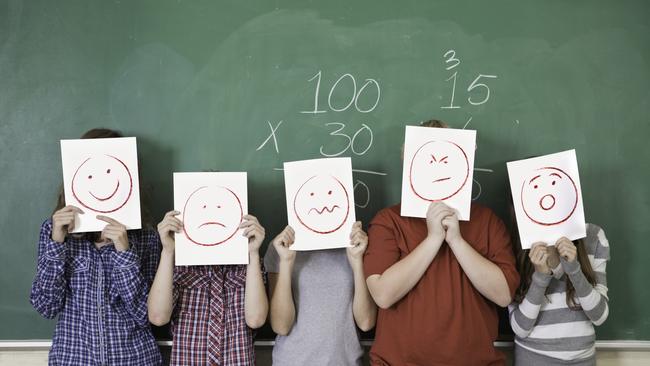Four in 10 kids missed at least a month of school this year
Four out of 10 students skipped at least a month of school this year as attendance levels failed to bounce back from pandemic lows | SEE THE TOP SCHOOLS

Four out of 10 students skipped at least a month of school this year as attendance levels failed to bounce back from pandemic lows.
New school performance data reveals students in schools dominated by poor families have fallen years behind children from affluent schools.
Only 61.6 per cent of students turned up to at least 90 per cent of classes in Term 1 this year – equivalent to a month of lost schooling.
Students who skip school one day a week will miss the equivalent of three years of education by the time they leave school.
Attendance levels are higher than last year’s record low of 49.9 per cent, but still well below pre-pandemic levels of 73.1 per cent in 2019. In some of the nation’s poorest schools, at least half the students missed a month of school this year, reflecting rising rates of disengagement and a growing trend of “school refusal’’.
Falling levels of attendance helped drive the disastrous results in this year’s NAPLAN tests, in which one in three students failed to meet minimum standards for literacy and numeracy.
Federal Education Minister Jason Clare on Thursday warned that poor students are being “segregated’’ into low-performing schools. He called for the most talented teachers to be paid more to teach in the most disadvantaged schools.
“(Australia has) a lot of poor kids surrounded by other kids from poor families and disadvantaged backgrounds in the one school,” Mr Clare said.
“If you’re a child from a poor family, surrounded by a lot of poor kids at school, and you fall behind, it’s harder to catch up.’’
Mr Clare said students from disadvantaged backgrounds need extra support at school through parenting services, speech and occupational therapy, or on-site nurses. He said there was a “long way to go’’ to improve attendance levels, and schools must focus on student wellbeing.
“School refusal is complex and has a negative impact on students, teachers and parents,’’ he said.
“Over the last 10 years we’ve seen a drop in attendance rates right across the board – amongst boys and girls, primary schools and high schools, government and non-government schools, in the bush and in the cities.’’
Queensland Education Minister Grace Grace blamed the low attendance on Covid-19 and flu infections, rather than truancy.
“I think we’re still in pandemic mode,’’ she said. “I’ve had heaps of kids and teachers away.
“Before, you tended to keep a kid (in class) with a runny nose, but now the parents are rung up and you take them out of class because you don’t want to see it going through the school.’’
Ms Grace said it was a “real slog’’ to get kids to turn up to school more than half the time in some remote Indigenous communities. “These communities are difficult, you know, you have to get the elders involved. I’m still struggling to get more than 50 per cent attendance – it’s a real slog.’’

Despite concern over Covid-19, fresh MySchool data shows attendance rates are strongly linked to parental poverty, with well-off students more likely to show up.
In Mr Clare’s western Sydney electorate of Blaxland, half the students at Bankstown Girls High School live in the poorest 25 per cent of families, and virtually all speak a foreign language at home.
More than half the students missed out on a month of school days, and students performed below the national average in reading and numeracy across years 7 and 9.
On Sydney’s affluent north shore, students from Killara High School performed well above the national average in literacy and numeracy this year.
Nearly two-thirds of Killara High students live in the wealthiest 25 per cent of families, and 57 per cent are migrants.
The gap in achievement is so vast that year 9 students at Bankstown Girls High are reading at a lower level than students in year 5 at Killara Public School.
The year 7 students at Bankstown are reading at a level only just above Killara year 3 students.
A review of education spending priorities for a new National School Reform Agreement warned on Monday that school attendance has been in steady decline across Australia since 2015.
“Students absent from school one day a week throughout their schooling will miss the equivalent of three years of school in Australia,’’ its report states.
“There is a link between low levels of school attendance and achievement. Disengagement … can start early and become more entrenched over time.’’
The Australian Curriculum, Assessment and Reporting Authority will publish school-by-school NAPLAN results on Friday on myschool.edu.au.
In Treasurer Jim Chalmers’ seat of Rankin, centred on the strugglers’ city of Logan south of Brisbane, students at public schools performed well below the national standard in reading and numeracy. At Woodridge State High School, where three-quarters of students live in the poorest 25 per cent of families, half the students skipped school at least once a fortnight.
Students in years 7 and 9 were well below the national average in every domain of reading, writing, spelling, grammar and numeracy.
In Brisbane’s middle-class suburb of Kenmore, 41 per cent of students missed the equivalent of a month of classes at the local public high school.
However, students at Kenmore State High School performed above the national average in literacy and numeracy.
MySchool data shows that 43 per cent of Kenmore high school kids live in the wealthiest families, compared to 1 per cent of students from Woodridge.




To join the conversation, please log in. Don't have an account? Register
Join the conversation, you are commenting as Logout